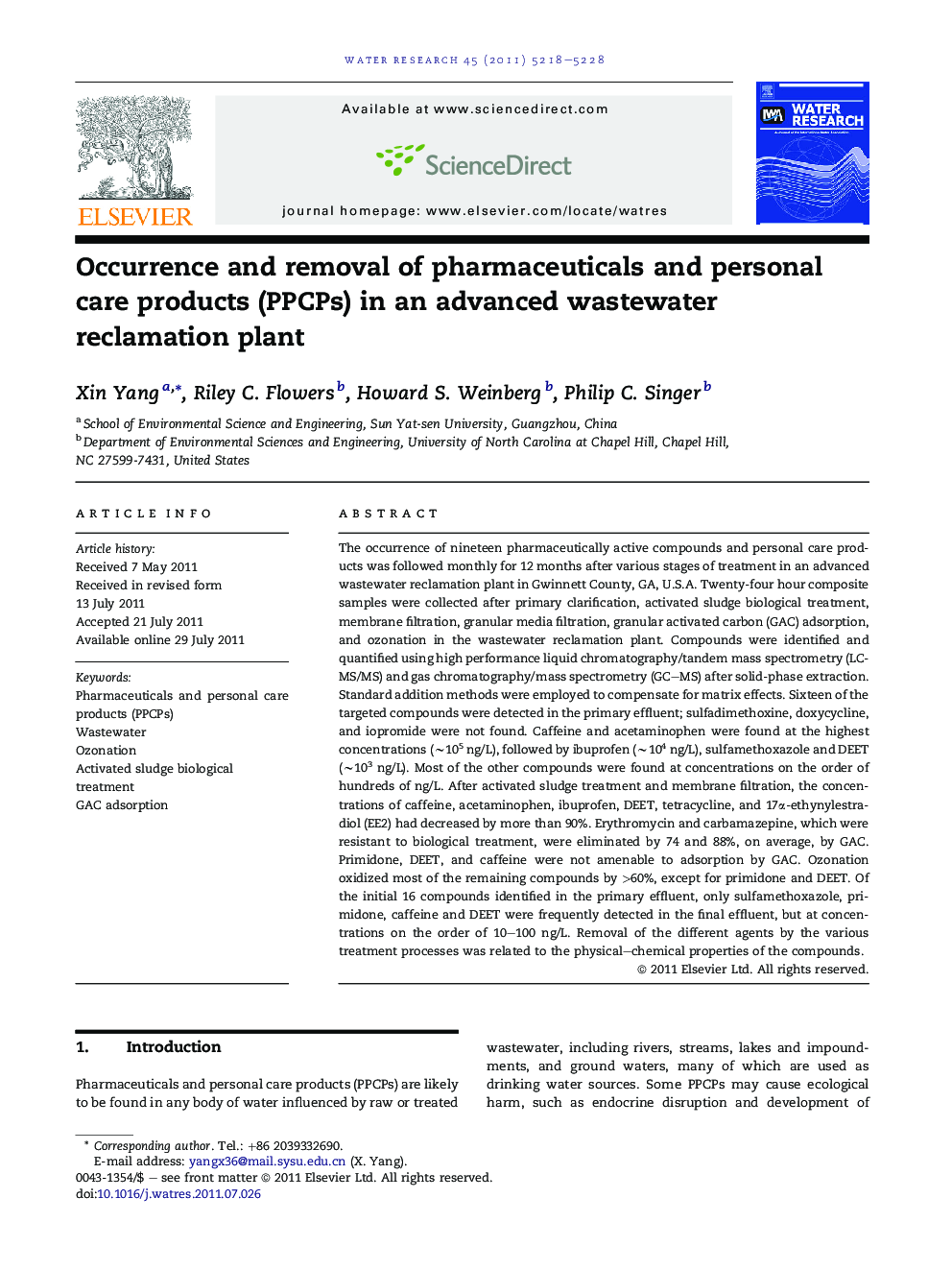| Article ID | Journal | Published Year | Pages | File Type |
|---|---|---|---|---|
| 4483090 | Water Research | 2011 | 11 Pages |
The occurrence of nineteen pharmaceutically active compounds and personal care products was followed monthly for 12 months after various stages of treatment in an advanced wastewater reclamation plant in Gwinnett County, GA, U.S.A. Twenty-four hour composite samples were collected after primary clarification, activated sludge biological treatment, membrane filtration, granular media filtration, granular activated carbon (GAC) adsorption, and ozonation in the wastewater reclamation plant. Compounds were identified and quantified using high performance liquid chromatography/tandem mass spectrometry (LC-MS/MS) and gas chromatography/mass spectrometry (GC–MS) after solid-phase extraction. Standard addition methods were employed to compensate for matrix effects. Sixteen of the targeted compounds were detected in the primary effluent; sulfadimethoxine, doxycycline, and iopromide were not found. Caffeine and acetaminophen were found at the highest concentrations (∼105 ng/L), followed by ibuprofen (∼104 ng/L), sulfamethoxazole and DEET (∼103 ng/L). Most of the other compounds were found at concentrations on the order of hundreds of ng/L. After activated sludge treatment and membrane filtration, the concentrations of caffeine, acetaminophen, ibuprofen, DEET, tetracycline, and 17α-ethynylestradiol (EE2) had decreased by more than 90%. Erythromycin and carbamazepine, which were resistant to biological treatment, were eliminated by 74 and 88%, on average, by GAC. Primidone, DEET, and caffeine were not amenable to adsorption by GAC. Ozonation oxidized most of the remaining compounds by >60%, except for primidone and DEET. Of the initial 16 compounds identified in the primary effluent, only sulfamethoxazole, primidone, caffeine and DEET were frequently detected in the final effluent, but at concentrations on the order of 10–100 ng/L. Removal of the different agents by the various treatment processes was related to the physical–chemical properties of the compounds.
Graphical abstractFigure optionsDownload full-size imageDownload high-quality image (78 K)Download as PowerPoint slideHighlights► The occurrence of 19 PPCPs was followed monthly for 12 months. ► Standard addition methods were employed to compensate for matrix effects. ► Sixteen of the targeted compounds were detected in the primary effluent. ► Activated sludge treatment, GAC and ozonation were effect to remove some PPCPs.
